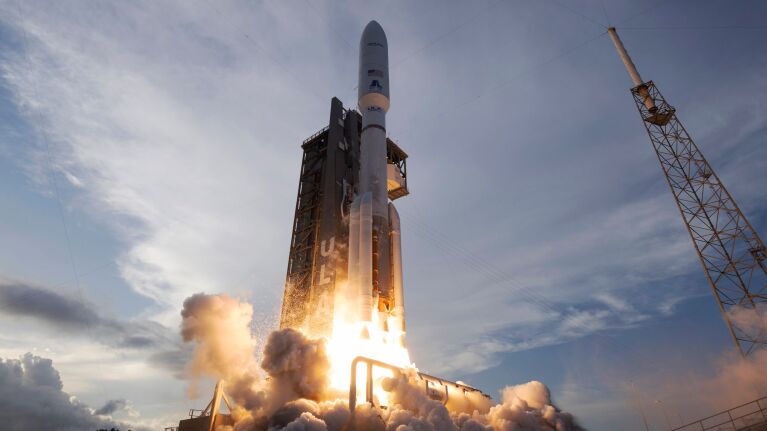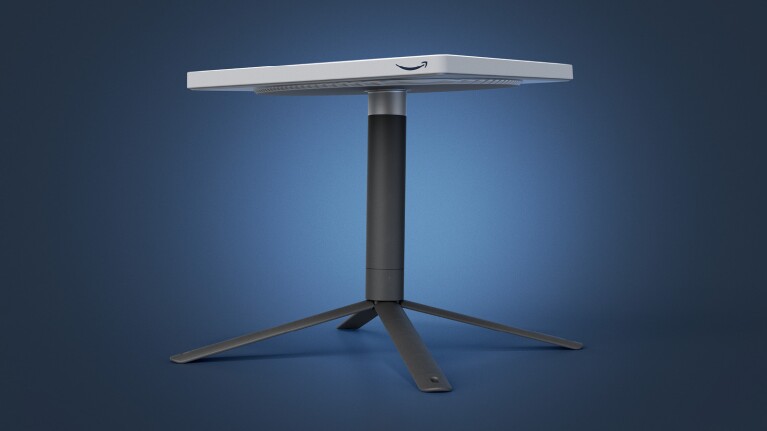Get answers to your questions about Amazon’s big, new initiative in space.


Written by Thomas Kohnstamm
Last updated: June 03, 2025
4 min read
Project Kuiper is Amazon’s initiative to provide fast, reliable broadband to customers and communities around the world, including in places that are currently unserved or underserved by traditional internet and communications options. To achieve this goal, Amazon will deploy thousands of satellites in low Earth orbit (LEO) linked to a global network of antennas, fiber, and internet connection points on the ground.
We’re often asked about the scope of Project Kuiper and the technology behind it. Here we answer 15 common questions:
Page overview
Who will Project Kuiper help connect?
1
Who will Project Kuiper help connect?
2
Why is Amazon taking this on?
3
Is Project Kuiper part of Blue Origin?
4
When did Amazon start Project Kuiper?
5
When will Project Kuiper service be available?
6
Why is it called Project Kuiper?
7
Where is Project Kuiper based?
8
How many people work on Project Kuiper?
9
What kinds of technologies does Project Kuiper use?
10
How many satellites will Project Kuiper have?
11
What is low Earth orbit (LEO)?
12
How do the satellites get into space?
13
Is it safe to have so many satellites in space?
14
How fast will Project Kuiper internet be?
15
How much will Project Kuiper service cost?
Who will Project Kuiper help connect?
Billions of people around the world don’t have reliable access to broadband. Poor connectivity means limited access to modern communications, education, health services, and other important resources, which can create an economic disadvantage for unserved and underserved communities. We started Project Kuiper to help bridge that digital divide, but our network is designed to serve a wide range of customers, including schools, hospitals, businesses, government agencies, and others operating in places without reliable connectivity or that need more flexible, resilient communications capabilities. We plan to deploy service to most countries around the globe, including hard-to-reach locations.
Why is Amazon taking this on?
You don’t have to travel far from major cities to lose internet connectivity—it can happen within a 60-minute drive from Amazon’s headquarters in Seattle. Cost, complexity, and geography can make it difficult to install traditional, ground-based fiber and wireless connectivity solutions in these areas.
Satellite broadband can fill many of those coverage gaps, but developing and deploying satellite technology requires significant innovation and investment. Amazon has the people and resources required to deploy and operate global satellite broadband services, and we feel a responsibility to use our success and scale to help bridge the digital divide.
Is Project Kuiper part of Blue Origin?
No. Project Kuiper is an Amazon initiative, part of the same Devices and Services division responsible for Kindle, Echo, Fire TV, eero, Ring, and other tech devices. Blue Origin is a separate company founded by Jeff Bezos.
When did Amazon start Project Kuiper?
Amazon began research and development on Project Kuiper in 2018. In July 2020, the U.S. Federal Communications Commission (FCC) granted Amazon a license to deploy and operate Project Kuiper satellites.
Why is it called Project Kuiper?

Project Kuiper started off as an internal code name for the program—and it stuck. The name refers to the Kuiper Belt, a region of the solar system that exists beyond the eight major planets. The Kuiper Belt itself is named after the late Dutch astronomer Gerard Kuiper, who is considered by many to be the father of modern planetary science.
Where is Project Kuiper based?
Project Kuiper is headquartered in Redmond, Washington, where we conduct primary research and development. Our satellite production facility in Kirkland, Washington, gives us manufacturing capacity to build up to five satellites per day. Additionally, our satellite processing facility at Kennedy Space Center, Florida, is where we prepare and integrate Kuiper satellites with rockets from Blue Origin, SpaceX, and United Launch Alliance ahead of launches.
How many people work on Project Kuiper?
Amazon has a team of thousands of world-class engineers, programmers, and support personnel helping deliver on the vision for Project Kuiper. Team members joined from many different industries, such as space and aerospace, wireless technology, and computer networking. They work out of our labs in Redmond and Kirkland in Washington state, as well as in cities across the U.S., like New York City, Austin, Denver, San Diego, and Washington, D.C., and internationally.
What kinds of technologies does Project Kuiper use?
Project Kuiper has three main parts: ground infrastructure, satellites, and customer terminals. Amazon’s ground infrastructure includes gateway antennas that securely send and receive customer data to and from satellites, along with telemetry, tracking, and control (TT&C) antennas that keep the satellites properly operating. Global networking connects those gateway antennas to the internet, public cloud, or private networks.
Satellites make up the second part of the project. They operate in low Earth orbit (LEO) and relay data traffic to and from our gateway antennas and customers. Lastly, customer terminals are the technology that Project Kuiper customers use to receive internet service. The terminals combine antennas and processors into a single, compact system to deliver connectivity.
How many satellites will Project Kuiper have?
Project Kuiper’s initial satellite constellation design includes 3,232 satellites. The term “constellation” refers to a group of similar satellites working together with tightly coordinated movements to achieve a common purpose—in this case, providing reliable broadband coverage.
What is low Earth orbit (LEO)?

Low Earth orbit is an area of space that extends up to 2,000 kilometers (about 1,243 miles) above Earth. Project Kuiper satellites will orbit between 590 and 630 kilometers (about 367 and 392 miles). Our satellites’ proximity to the surface of the Earth reduce latency for customers, making Project Kuiper connectivity effective for uses like video calls, gaming, and high-definition streaming.
How do the satellites get into space?
Amazon works with commercial launch providers to send Project Kuiper satellites into space. We’ve secured more than 80 launches from Arianespace, Blue Origin, SpaceX, and ULA to deploy our initial satellite constellation. Together, these agreements represent the largest commercial procurement of launch vehicles in history.
Is it safe to have so many satellites in space?
Space safety and sustainability are core tenets of Project Kuiper and have been from the initiative’s inception. Those tenets have influenced everything from the overall architecture of Project Kuiper’s satellite system to the design of the satellites themselves and the way we engage external stakeholders like scientists and other space operators.
How fast will Project Kuiper internet be?

We’re designing the system to balance performance and affordability, and we plan to provide choice and flexibility by offering a range of options for customers. Our standard customer terminal delivers downlink speeds up to 400 megabits per second (Mbps); our largest model, which is intended for enterprise, government, and telecommunications applications, delivers up to 1 gigabit per second (Gbps); and our ultra-compact model delivers up to 100 Mbps.
How much will Project Kuiper service cost?
We haven't announced pricing details yet, but affordability is a key principle of Project Kuiper. Amazon has a longstanding commitment to low prices, and lots of experience building popular, low-cost devices like Echo Dot and Fire TV Stick. We’re applying a similar approach with Project Kuiper. We also know customer needs will vary quite a bit around the world, and our service offerings will vary from country to country with the right pricing and service for customers in each region.
Learn more about Project Kuiper.
.png)




